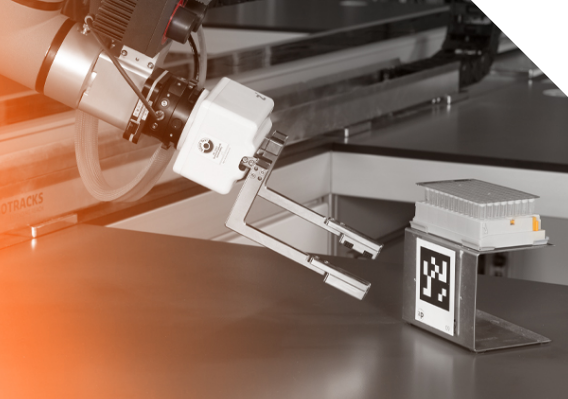Lab workflow automation: how can it help?

Share this article
Implementing a detailed laboratory workflow is the key to success, and introducing automation is the key to consistency and eliminating snags in your workflows.
What is a lab workflow?
A laboratory workflow involves a set of procedures that are implemented to effectively manage tasks in the lab. This has to consider how the time of both human workers and machines is used, as well as which resources and materials are available at each stage.
When a workflow is watertight and each step is adhered to, the lab should run like a well-oiled machine. Each task should be able to be completed on time, and deliverables should be easy to predict.
1) Automation can resolve workflow bottlenecks
Every lab develops bottlenecks or other obstacles eventually. They may not be obvious at first, but could be holding back your team from their full potential. Some common bottlenecks we come across when discussing projects with clients include:
a) Inventory management
This is a time consuming process that creates a blocker to other team members, who may have to wait for inventories to be checked, order sheets to be filled in, or stock levels to be documented and replenished before carrying out their work. Inefficient inventory management can put workers' days behind.
b) Sample preparation
Another common hurdle; there is a lot of scope for human error when preparing samples. If they are mishandled or prepared incorrectly, it can mean some processes have to be started again.
c) Resource issues
This is a bottleneck that can’t always be controlled within the lab - for example, during the COVID-19 pandemic, there was a major shortage of resources due to lockdown restrictions. However, a comprehensive stock management system will help to identify and offset upcoming resource issues.
Of course, every industry will have specific bottlenecks to watch out for. For example, a life sciences lab might come up against challenges with downstream processing and animal studies.
2) Improved data reproducibility and repeatability
The addition of automated steps to your workflow means that protocols, calculations, and experiments can be reproduced at pace without inconsistencies impacting results. This reliability is crucial for medical and scientific laboratories.
Automation helps researchers to repeat tests and experiments under the same or different conditions to ensure their results are accurate. Without automation, both machines and humans can still produce reliable results, but the margin for error is much higher.
3) Expanding lab operations
Not all processes need human oversight to be completed - this is where automation can step in. Automated systems can handle tasks like pipetting, sample preparation, and analysis for increased throughput. Introducing automation also opens up possibilities for 24/7 operation. Whilst workers aren’t on the clock, systems that require incubation or analysis cycles can still continue running with results prepared to be reviewed in the morning.
Could you utilise lab automation to improve your workflow?
Laboratory automation can extend and expand the usage of your lab, as well as relieving bottlenecks that are holding your workers back from hitting higher performance targets and working in a consistent, stress-free environment. By removing the obvious issues that are present within your workflow, the quality of work outputted by your lab will increase significantly.
At Astech, we design and develop bespoke lab automation systems to suit your exact specifications. To learn more about how we could help you, get in touch with our team.


